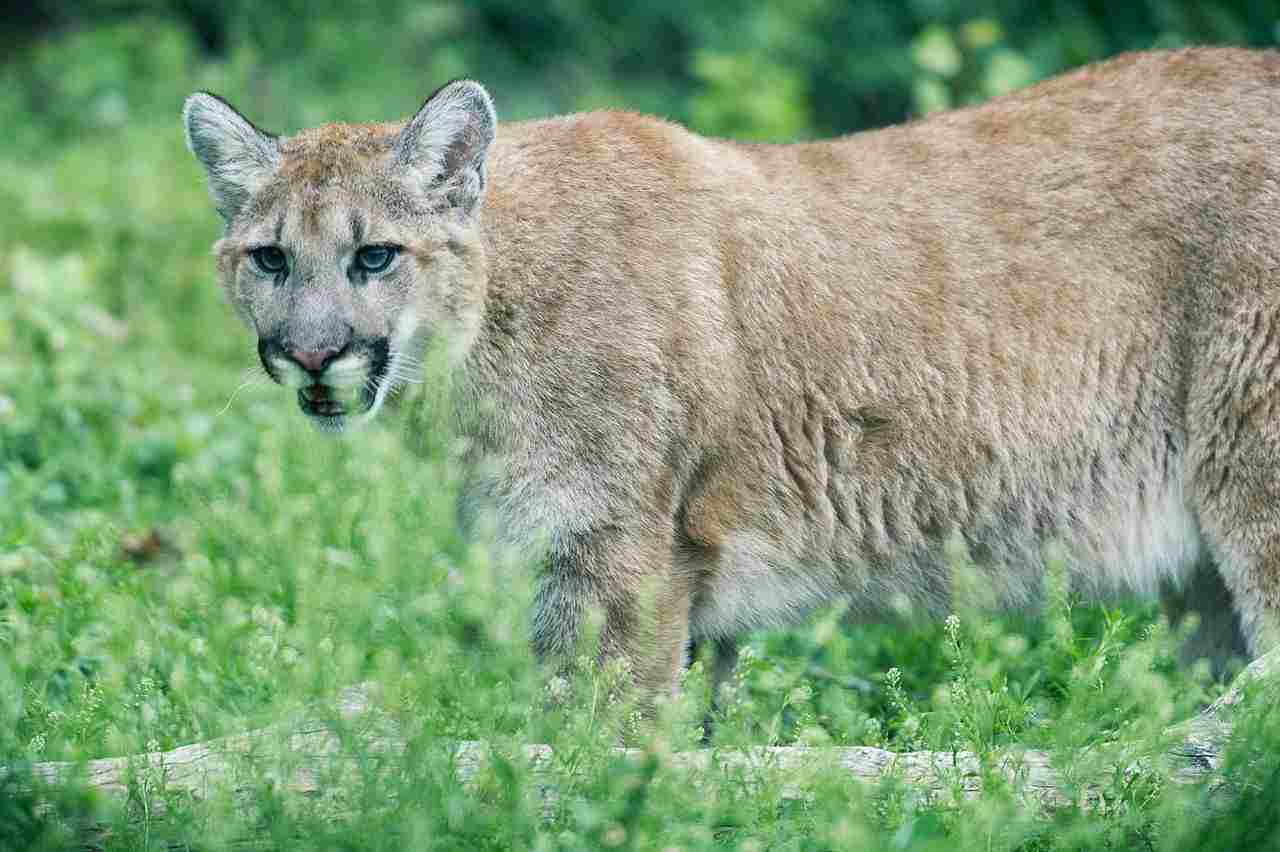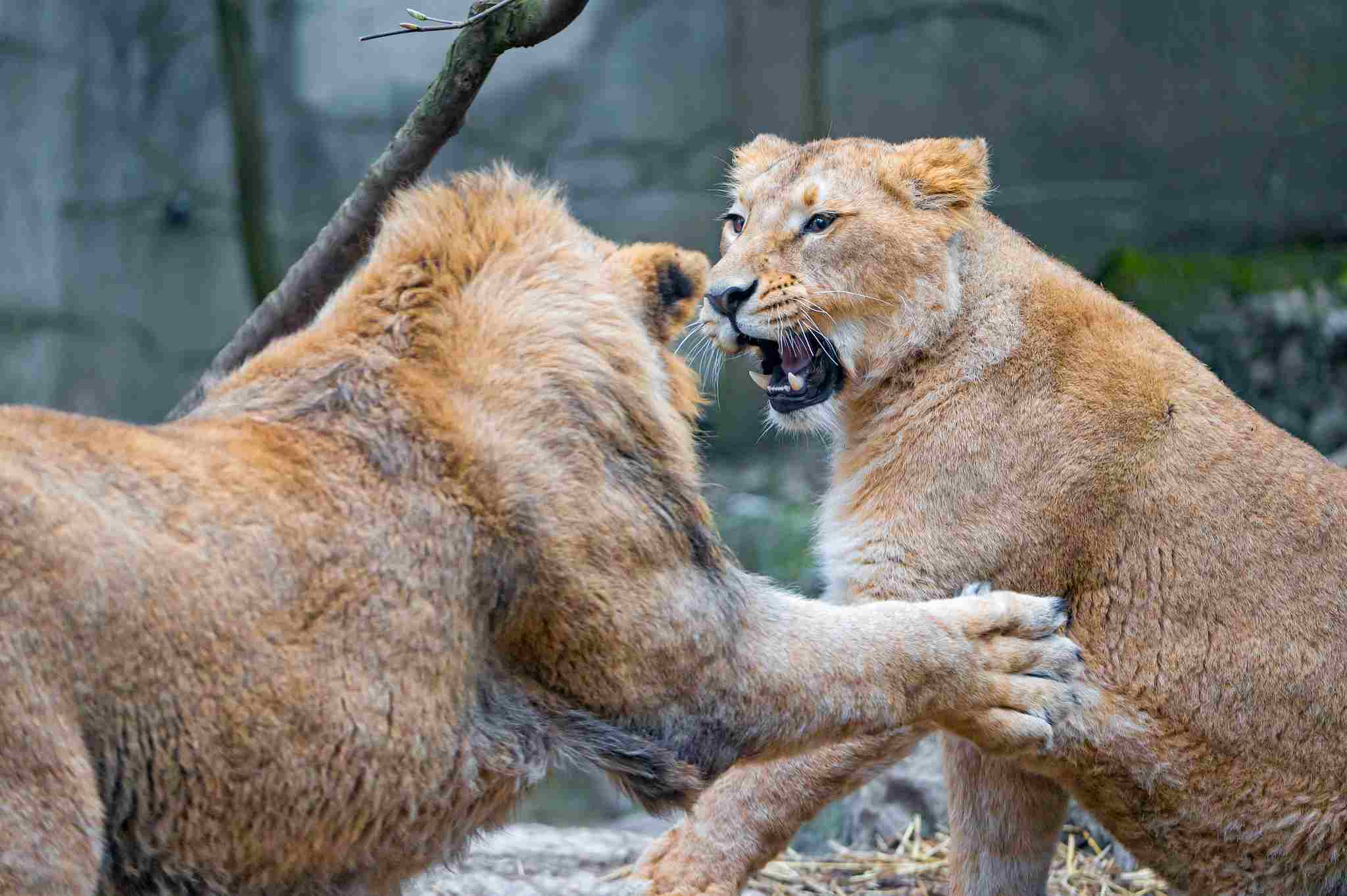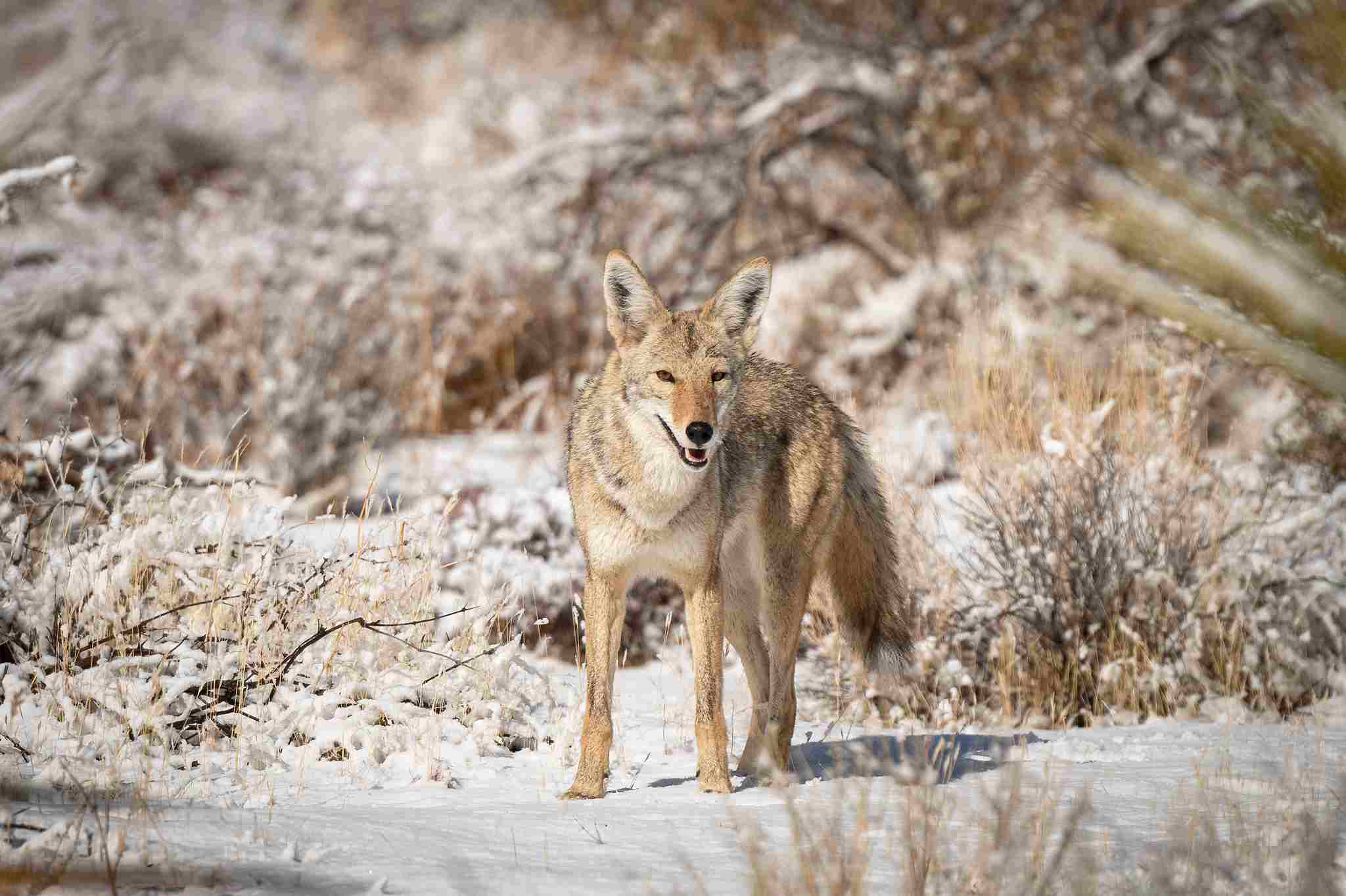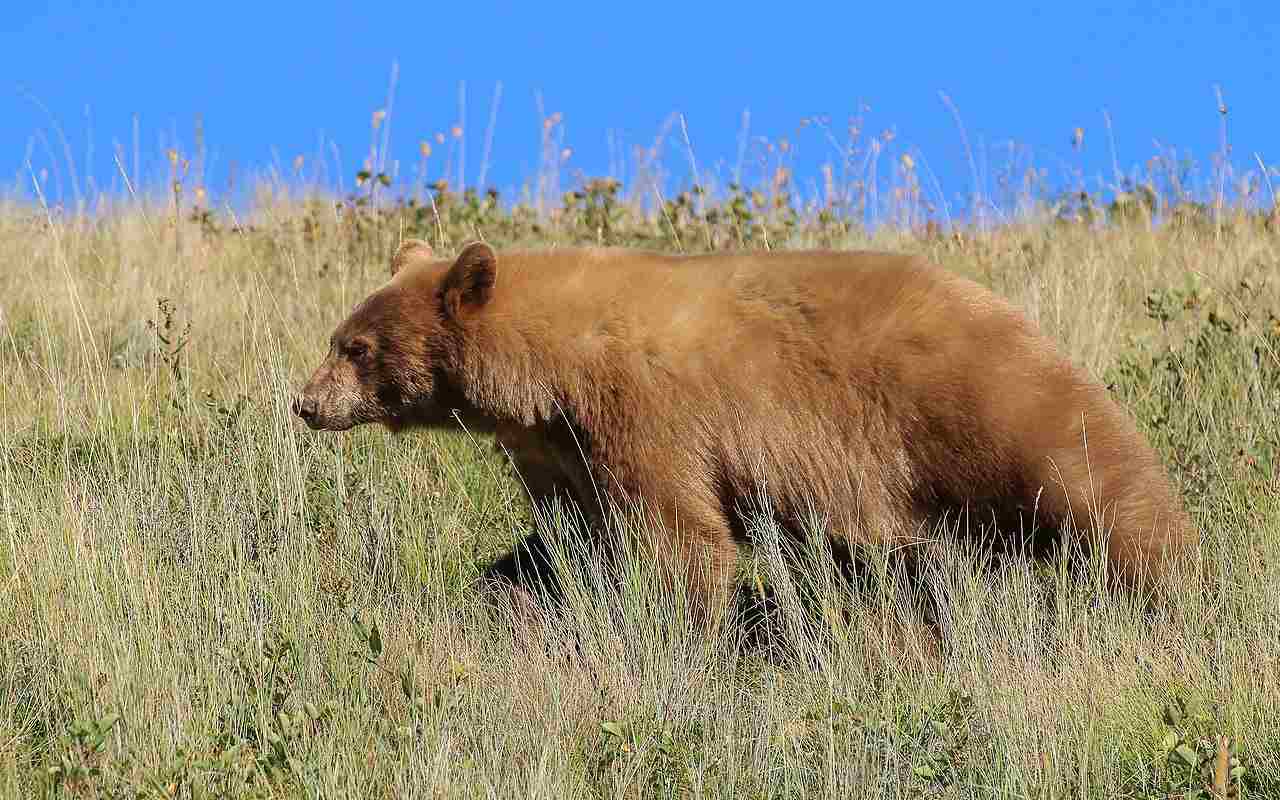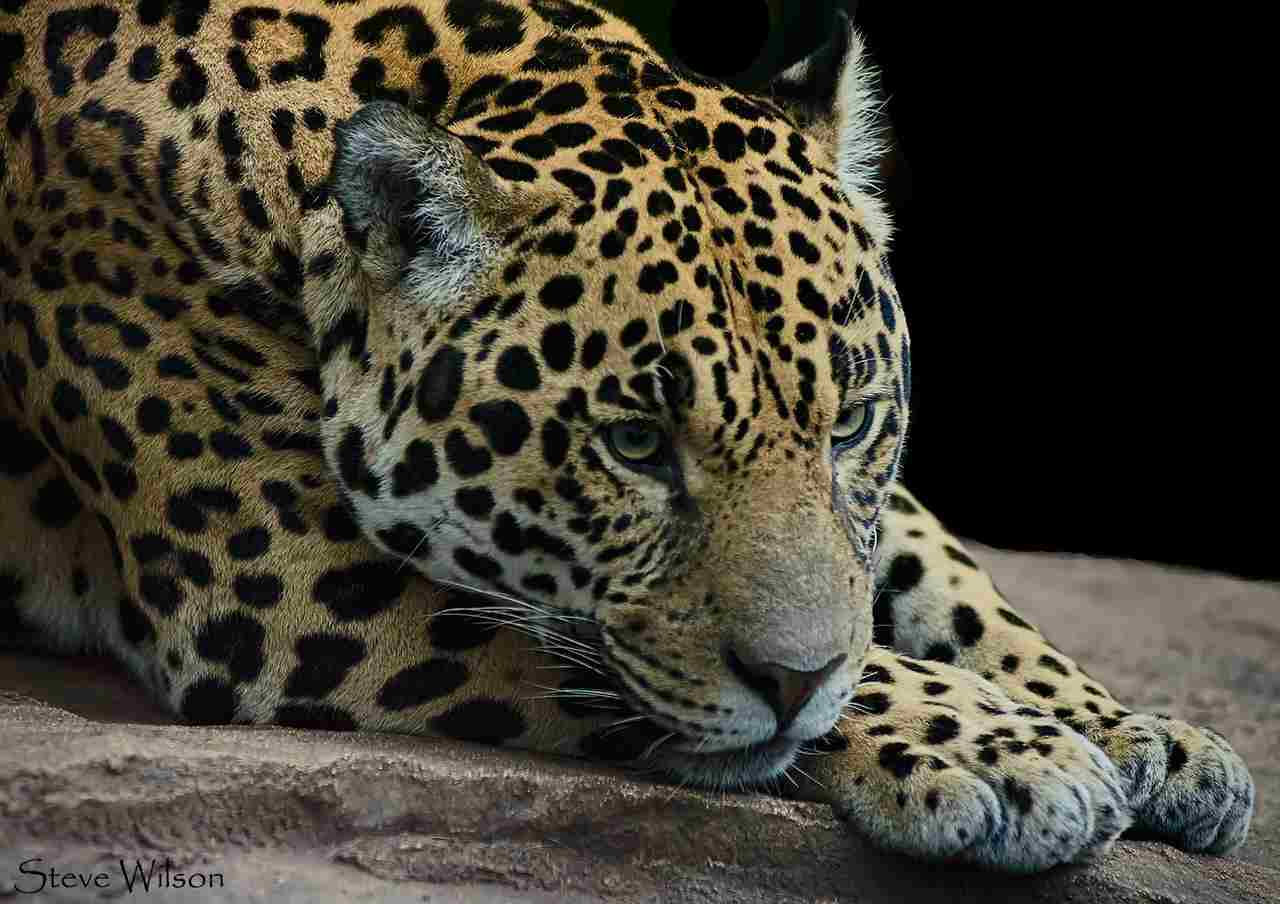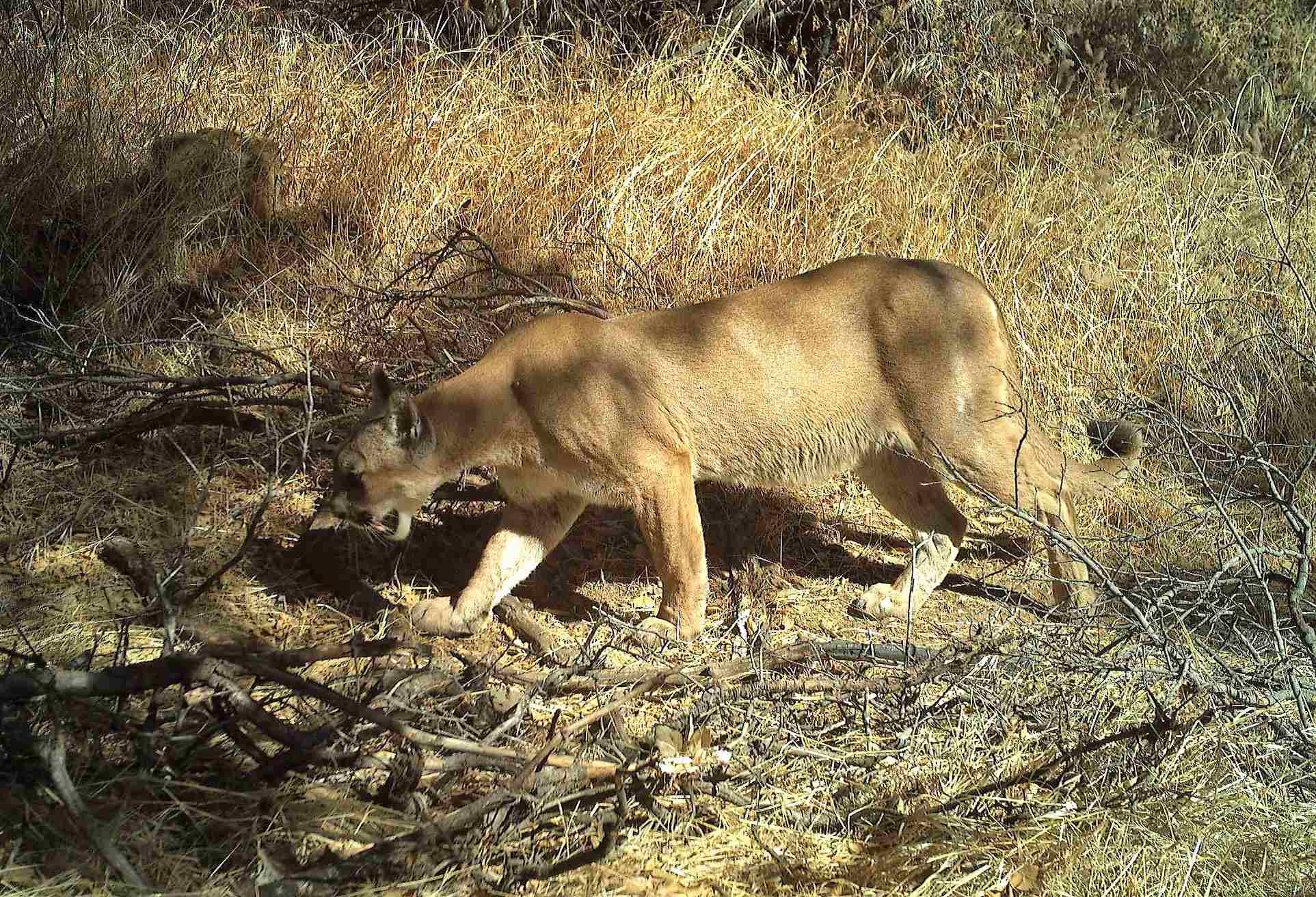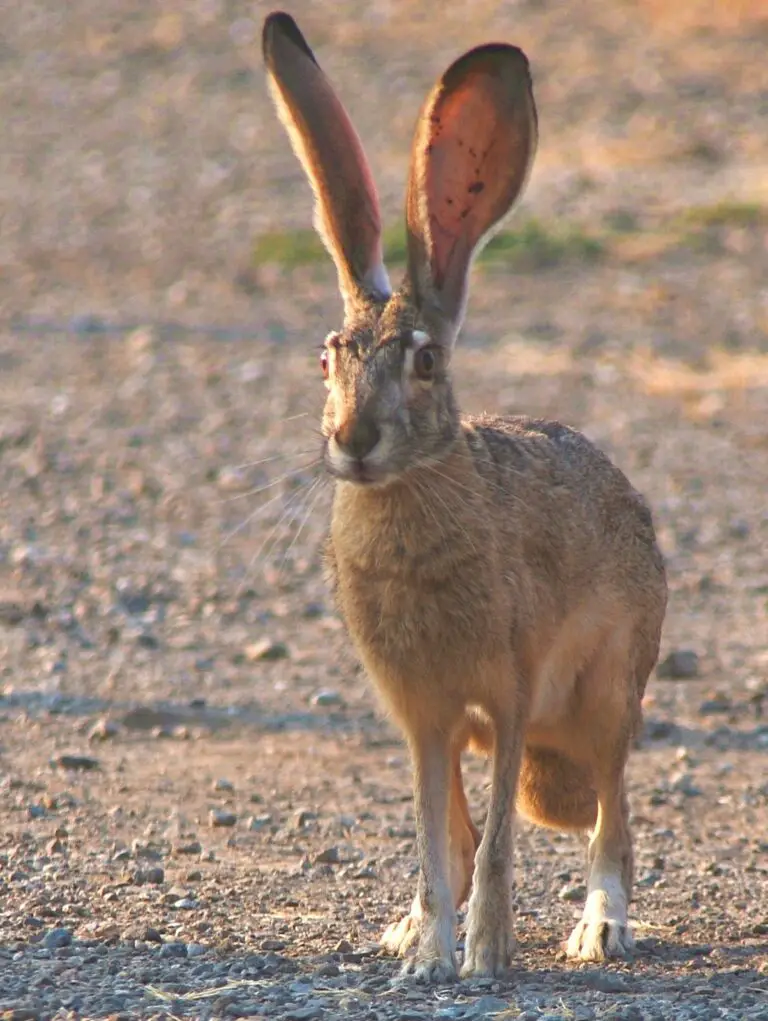Jaguar Vs Mountain Lion Size, Weight, Ecological Comparison
Jaguars have a clear advantage over mountain lions in a physical confrontation. They are larger, heavier, and stronger, giving them the upper hand in a fight. Additionally, jaguars are known for their aggressive nature, which further enhances their chances of winning.
Bite force is another crucial factor where jaguars excel. In this article, we will compare these two felines based on factors like size, weight, strength, and aggression to demonstrate why a jaguar would emerge victorious in a fight.
Reasons Why a Jaguar Will Win a Mountain Lion In a Fight/Physical Confrontation
I). Size and Weight Superiority
One of the main reasons why a jaguar would win in a fight against a mountain lion is its size and weight superiority. Jaguars are larger and heavier than mountain lions, giving them a significant advantage in physical confrontations.
With an average length of 5 to 6 feet and weighing between 100 to 250 pounds, jaguars are built to overpower their opponents. On the other hand, mountain lions have an average length of 4 to 5 feet and weigh between 80 to 200 pounds, making them smaller and lighter in comparison.

II). Jaguars are Generally Stronger Than Mountain Lions
In addition to their size advantage, jaguars are generally stronger than mountain lions. They have a more robust build, with powerful muscles and a sturdy frame that allows them to deliver stronger blows and withstand attacks.
Jaguars are known for their ability to take down large prey, such as caimans and tapirs, which requires immense strength. This strength translates into their fighting capabilities, making them formidable opponents in a physical confrontation.
III). Higher Level of Aggressiveness
Another reason why a jaguar would likely win in a fight against a mountain lion is their higher level of aggressiveness. Jaguars are known for their aggressive nature and willingness to engage in confrontations. They are fearless predators that actively seek out and attack their prey, even if it is larger or stronger than them. Mountain lions, on the other hand, are more elusive and tend to avoid unnecessary conflicts. This difference in aggression gives jaguars an edge in a fight, as they are more likely to initiate and persist in an attack.
Therefore, the size and weight superiority, greater strength, and higher level of aggressiveness make jaguars more likely to win in a fight against mountain lions. These factors combined give jaguars the upper hand in physical confrontations between the two feline species.
*Details of Comparison
| Feature | Jaguar | Mountain Lion |
| Size & Weight | Larger (5-6 ft, 100-250 lbs) |
Smaller (4-5 ft, 80-200 lbs)
|
| Strength | Stronger | Weaker |
| Aggressiveness | More aggressive | Less aggressive |
| Bite Force | 1500 psi | 1000 psi |
| Speed & Agility | Agile with bursts of 50 mph |
Faster runner at 40-50 mph
|
| Habitat | Dense rainforests, swamps, grasslands |
Diverse: forests, deserts, mountains
|
| Lifespan | 12-15 years | 10-13 years |
| Feeding | Ambushes prey near water, prefers larger animals |
Versatile hunter of smaller prey
|
| Social Behavior | Solitary except during mating |
Flexible: solitary or small groups
|
| Reproduction | Litters of 2-4 cubs |
Litters of 2-3 cubs
|
| Danger to Humans | More dangerous due to strength and bite |
Less likely to attack, avoid humans
|
| Intelligence | Exceptional hunting strategies, adaptability |
Agile, skilled at tracking and ambush
|
| Tracks | Large, round with pad imprint, direct register gait |
Smaller, elongated, overstep gait
|
| Conservation Status | Near threatened: declining due to habitat loss and poaching |
Varies by region: some populations declining due to similar threats
|
1). Taxonomy
The taxonomy of the jaguar (Panthera onca) and the mountain lion (Puma concolor) reveals interesting similarities and differences between these two big cats. Both belong to the Felidae family, but they are classified under different genera. The jaguar falls under the Panthera genus, which also includes other big cats like lions, tigers, and leopards. On the other hand, the mountain lion is classified under the Puma genus, which is unique to this species.
Despite their taxonomic differences, the jaguar and the mountain lion share certain physical characteristics. Both animals have muscular bodies and are well-adapted predators. However, the jaguar is known for its stockier build and more robust appearance compared to the sleeker mountain lion.
In terms of their overall taxonomy, the jaguar and the mountain lion are distinct species with their own unique genetic makeup. While they may share some similarities, their taxonomic classification highlights their individuality within the animal kingdom.
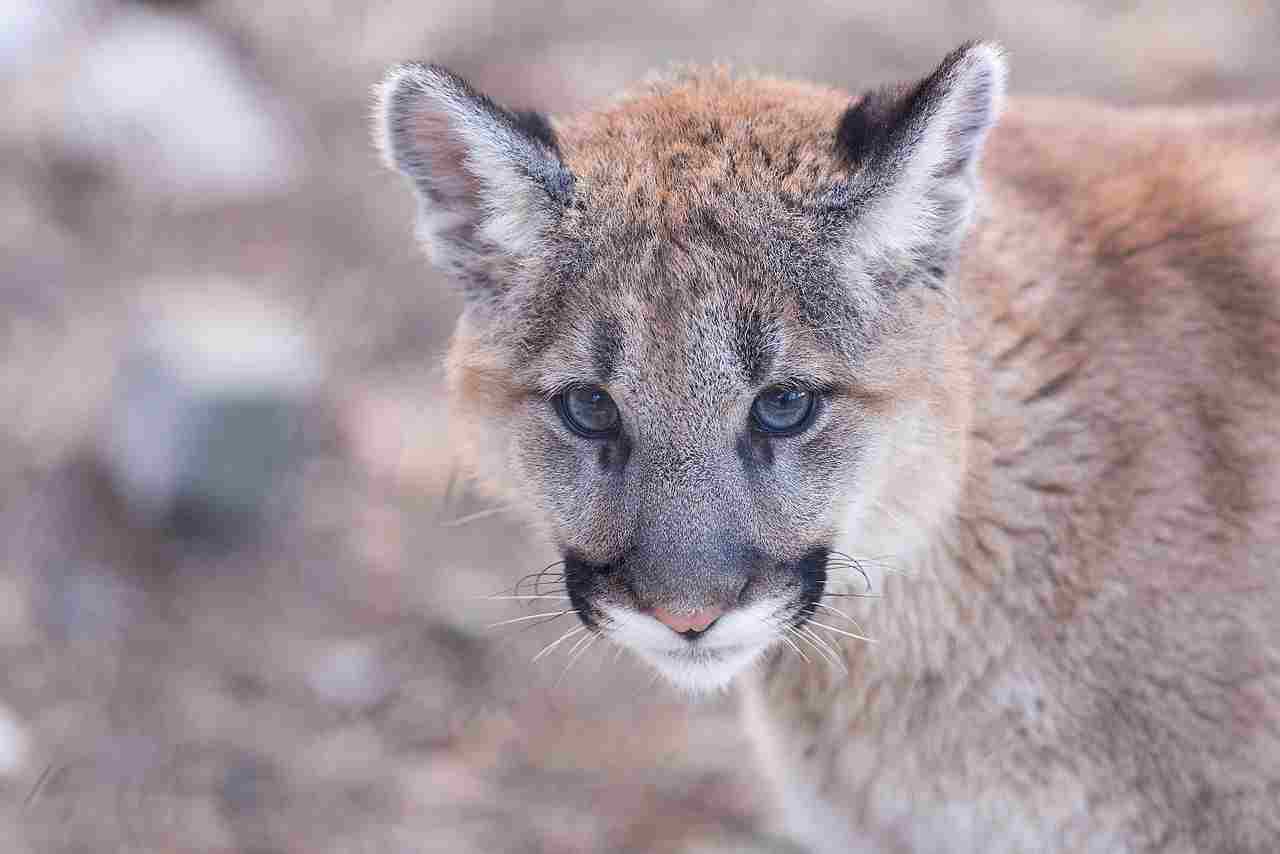
2). Appearance
The appearance of the jaguar and the mountain lion is distinct and reflects their unique adaptations and characteristics. Starting with their coats, both big cats have fur that plays a crucial role in their survival. The jaguar’s coat is known for its distinctive rosette patterns, which provide excellent camouflage in its forested habitats. On the other hand, the mountain lion has a plain coat with a uniform color, allowing it to blend into its surroundings, such as rocky terrains and dense vegetation.
In terms of stature and build, the jaguar and the mountain lion have noticeable differences. The jaguar has a more robust and muscular build, with a stockier appearance compared to the sleeker mountain lion. This physical difference is a reflection of their respective hunting strategies and habitats. The jaguar’s powerful build enables it to ambush and overpower larger prey, while the mountain lion relies on its agility and speed to chase down its prey in open spaces.
Overall, the appearance of the jaguar and the mountain lion showcases their unique adaptations to their environments and hunting styles. While the jaguar’s rosette patterns and stockier build make it a formidable predator in the dense forests it inhabits, the mountain lion’s plain coat and sleek physique allow it to excel in more open and rugged terrains.
3). Size
When comparing the size of jaguars and mountain lions, it is clear that jaguars are larger in general. Jaguars can grow to be between 120 and 300 pounds, measuring up to 5.6 feet in length and standing about 2.5 feet at the shoulder. On the other hand, mountain lions typically weigh up to 130 pounds on average, but they can measure up to 8 feet in length and stand up to 3 feet tall.
The size difference between these two big cats is significant and can be attributed to various factors. The larger size of jaguars is likely due to their habitat and hunting strategies. Jaguars inhabit dense forests where they need to be able to overpower larger prey, such as caimans and tapirs. Their robust build and larger size give them an advantage in tackling these formidable prey.
Mountain lions, on the other hand, are adapted to more open and rugged terrains. Their sleeker physique and slightly smaller size allow them to navigate these environments with agility and speed. While they may not be as large as jaguars, mountain lions are still formidable predators in their own right.
4). Weight
When comparing the weight of jaguars and mountain lions, it is evident that jaguars are generally heavier. Jaguars can weigh between 120 and 300 pounds, while mountain lions typically weigh up to 130 pounds on average.
The weight difference between these two big cats can be attributed to their respective habitats and hunting strategies. Jaguars, being larger and more robust, inhabit dense forests where they need to overpower larger prey such as caimans and tapirs. Their heavier weight gives them an advantage in tackling these formidable prey.
Mountain lions, on the other hand, are adapted to more open and rugged terrains. Their sleeker physique and slightly smaller size allow them to navigate these environments with agility and speed. While they may not be as heavy as jaguars, mountain lions are still powerful predators in their own right.
It is important to note that weight alone does not determine the outcome of a fight or physical confrontation between these two big cats. Factors such as agility, bite force, and overall physical capacity also play significant roles.
5). Speed and Agility
Jaguars are known for their agility, which allows them to navigate through dense forests and climb trees effortlessly. They can reach speeds of up to 50 miles per hour in short bursts, making them formidable hunters.
Mountain lions, on the other hand, are renowned for their exceptional speed and agility in open terrains. They are capable of running at speeds of up to 40 to 50 miles per hour, enabling them to chase down their prey with precision and efficiency. Their muscular hind legs and flexible spines contribute to their swift movements.
While both jaguars and mountain lions exhibit impressive speed and agility, their different habitats and hunting strategies have influenced their specific adaptations. Jaguars rely on their agility to navigate through dense vegetation, while mountain lions rely on their speed to pursue prey across vast territories.
6). Bite Force
Jaguars have an incredibly powerful bite force, with an average measurement of 1,500 pounds per square inch (psi). This allows them to deliver a lethal bite to their prey, piercing through tough hides and crushing bones effortlessly. Their strong jaws and sharp teeth are adapted for hunting large prey such as caimans and tapirs.
On the other hand, mountain lions have a slightly lower bite force, averaging around 1,000 psi. While not as powerful as jaguars, their bite is still formidable and sufficient for their hunting needs. Mountain lions primarily prey on deer and smaller animals, and their bite force is well-suited for taking down these agile and swift creatures.
The difference in bite force between jaguars and mountain lions can be attributed to their varying hunting techniques and prey size. Jaguars rely on their powerful bite to immobilize and kill larger prey, while mountain lions use their bite force to deliver a swift and lethal bite to smaller prey.
7). Overall Physical Capacity (Which is Stronger?)
When comparing the overall physical capacity of jaguars and mountain lions, it becomes evident that jaguars have the advantage. They are heavier and possess more muscle mass, giving them greater strength and endurance. This increased physical power plays a crucial role in determining the outcome of a violent confrontation between the two animals.
Jaguars, with their robust build and muscular bodies, have the ability to overpower mountain lions in terms of sheer strength. Their larger size and stronger physique give them an edge in a physical battle. Additionally, jaguars have been known to take down larger prey, such as caimans and tapirs, which further demonstrates their superior physical capacity.
On the other hand, mountain lions, while agile and swift, lack the same level of strength and endurance as jaguars. Their smaller size and relatively lighter build make them less formidable in a direct confrontation. While mountain lions are skilled hunters and can take down smaller prey with their agility and stealth, they would struggle to match the raw power of a jaguar.
Therefore, when considering the overall physical capacity, including size, muscle mass, and endurance, jaguars clearly surpass mountain lions. Their heavier build and greater strength give them the advantage in a violent confrontation, making them the stronger of the two animals.
8). Habitat
Jaguars are primarily found in dense rainforests, swamps, and grasslands of Central and South America. They are well-adapted to these ecosystems, utilizing their powerful build and agility to navigate through dense vegetation and hunt their prey effectively. Mountain lions, on the other hand, have a broader geographic range, inhabiting various habitats across North and South America, including forests, deserts, and mountains.
Jaguars’ preference for dense rainforests and swamps is due to their reliance on cover and water sources for hunting. These habitats provide ample opportunities for ambush, as well as access to their preferred prey, such as capybaras and peccaries. Mountain lions, on the other hand, are more adaptable and can thrive in a range of environments. They are known to inhabit forests, where they can utilize trees for cover and vantage points, as well as open areas where they can utilize their speed and agility to pursue prey.
In terms of habitat comparison, jaguars and mountain lions have distinct preferences and adaptations. Jaguars thrive in dense, tropical environments, while mountain lions are more adaptable and can inhabit a variety of habitats. This difference in habitat preference reflects the ecological diversity of these two species and their ability to survive in different environments.
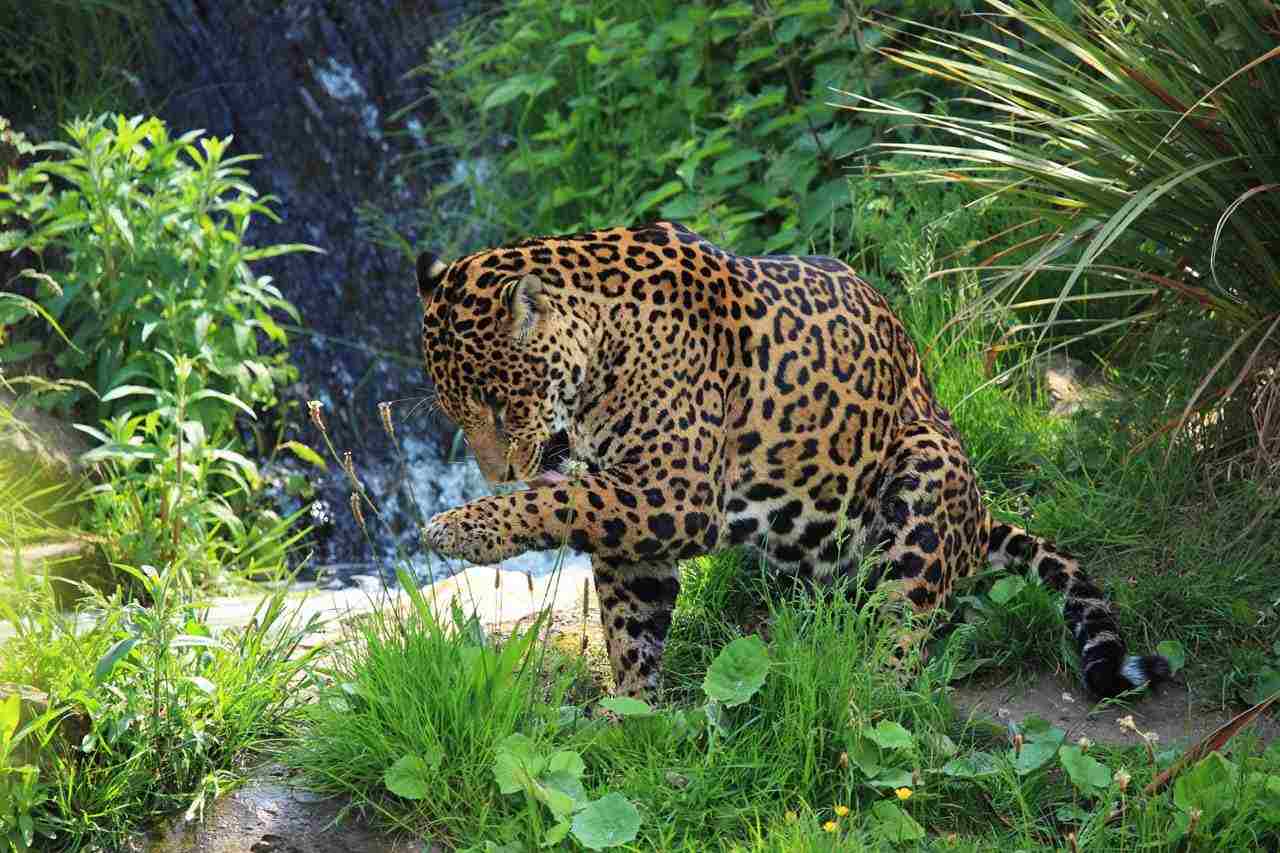
9). Lifespan
Jaguars have an average lifespan of around 12 to 15 years in the wild. However, there have been reports of jaguars living up to 20 years in captivity. Their lifespan is influenced by factors such as habitat availability, prey availability, and competition with other predators. Jaguars face threats such as habitat loss and poaching, which can impact their lifespan.
Mountain lions, on the other hand, have a slightly longer average lifespan in the wild, ranging from 10 to 13 years. Like jaguars, mountain lions can live longer in captivity, with some individuals reaching up to 20 years. The lifespan of mountain lions is influenced by similar factors, including habitat availability, prey availability, and human activities such as hunting and habitat fragmentation.
Overall, both jaguars and mountain lions have relatively long lifespans compared to many other wild animals. However, it is important to note that these lifespans can vary depending on various ecological and environmental factors.
10). Behavior
When comparing the behavior of jaguars and mountain lions, several key aspects come into play. One important factor is feeding behavior. Both jaguars and mountain lions are carnivorous predators, but they exhibit different hunting strategies. Jaguars are known for their preference for water and are skilled swimmers, often ambushing their prey near rivers or lakes. On the other hand, mountain lions are more versatile hunters, capable of adapting to various terrains and hunting smaller prey such as deer and rodents.
Aggression is another aspect of behavior that sets these two big cats apart. Jaguars are known for their aggressive nature, often displaying territorial behavior and defending their hunting grounds from other predators. Mountain lions, while also territorial, tend to be more elusive and avoid confrontations whenever possible.
Vocalization is another behavior that differs between the two species. Jaguars have a wide range of vocalizations, including growls, roars, and even a distinctive saw-like call. Mountain lions, on the other hand, are known for their eerie screams and hisses, which they use for communication and territorial marking.
In terms of social behavior, jaguars are generally solitary animals, except during mating season. They establish and defend their territories, which can range from 10 to 80 square miles. Mountain lions, on the other hand, have a more flexible social structure, with some individuals forming small family groups or sharing territories with other mountain lions.
When it comes to parenting, both jaguars and mountain lions exhibit maternal care. Female jaguars and mountain lions raise their cubs alone, providing them with protection, food, and teaching them essential hunting skills.
Therefore, while both jaguars and mountain lions share some similarities in behavior, such as being carnivorous predators, they also have distinct differences in hunting strategies, aggression, vocalization, social behavior, and parenting.
11). Reproduction
When comparing the reproduction of jaguars and mountain lions, there are several key differences to consider. Firstly, both species are viviparous, meaning they give birth to live young. However, the gestation period differs between the two. Female jaguars have a gestation period of approximately 90 to 110 days, while female mountain lions have a slightly longer gestation period of around 90 to 96 days.
In terms of litter size, jaguars typically give birth to two to four cubs, although larger litters of up to six cubs have been recorded. Mountain lions, on the other hand, usually have smaller litters, with two to three cubs being the average.
The reproductive behavior of these big cats also differs. Jaguars are known to have a polygamous mating system, where males mate with multiple females. This behavior increases the genetic diversity within the population. Mountain lions, on the other hand, have a more monogamous mating system, with males and females forming temporary pairs during the breeding season.
It’s important to note that both jaguars and mountain lions face threats to their reproductive success due to habitat loss, poaching, and human-wildlife conflicts. Conservation efforts are crucial to ensure the survival and reproductive success of these magnificent big cats.
12). Danger Posed to Humans
When considering the danger posed to humans by jaguars and mountain lions, it is important to examine their behavior and interactions with human settlements. Both species have the potential to come into close proximity to human habitats, but their attitudes towards humans differ.
Jaguars, with their stronger physical capacity and powerful bite force, are generally considered more dangerous than mountain lions. They have been known to attack humans in rare cases, especially when they feel threatened or cornered. However, it is important to note that jaguar attacks on humans are extremely rare and typically occur when humans encroach upon their territory.
Mountain lions, on the other hand, tend to be more elusive and avoid human contact. While they have been known to occasionally approach human settlements, they generally do not pose a significant threat to humans. Mountain lions are typically shy and will try to avoid confrontation with humans whenever possible.
In terms of the rate of human deaths caused by these big cats, jaguars have been responsible for a few reported fatalities, whereas mountain lions have a higher number of documented attacks on humans, resulting in some fatalities. However, it is important to remember that such incidents are still relatively rare.
If you encounter a jaguar or mountain lion in the wild, it is crucial to exercise caution and take appropriate precautions. Avoid approaching the animal, maintain a safe distance, and never attempt to feed or provoke them. If a confrontation does occur, it is recommended to make yourself appear larger, make loud noises, and slowly back away without turning your back on the animal.
Therefore, while both jaguars and mountain lions have the potential to pose a danger to humans, jaguars are generally considered more dangerous due to their physical strength and bite force.
13). Intelligence
When comparing the intelligence of jaguars and mountain lions, it is important to consider their cognitive abilities and problem-solving skills. Both species exhibit a high level of intelligence, but there are some differences in their behaviors and adaptations.
Jaguars are known for their exceptional intelligence, which is reflected in their hunting strategies. They are skilled at stalking and ambushing their prey, using their intelligence to calculate the best approach and timing for a successful kill. Jaguars also display a remarkable ability to adapt to different environments, allowing them to thrive in a variety of habitats.
Mountain lions, while also intelligent, have a different approach to hunting. They rely more on their agility and stealth, using their intelligence to navigate their territories and locate suitable prey. Mountain lions are known for their ability to track and ambush their prey, showcasing their intelligence in their hunting techniques.
In terms of problem-solving skills, both jaguars and mountain lions have demonstrated the ability to overcome obstacles and adapt to changing circumstances. They are capable of learning from their experiences and adjusting their behaviors accordingly.
Therefore, while both jaguars and mountain lions possess a high level of intelligence, jaguars may have a slight edge due to their exceptional hunting strategies and adaptability. However, it is important to note that intelligence can vary among individuals within each species, and further research is needed to fully understand the extent of their cognitive abilities.
14). Tracks
When comparing the tracks of jaguars and mountain lions, there are some distinct differences that can help identify which animal left the mark.
Jaguar tracks are characterized by their large size and round shape. They have four toes with retractable claws, and the tracks often show the imprint of the pad. The size of the tracks can vary depending on the age and sex of the jaguar, with males generally leaving larger tracks than females.
On the other hand, mountain lion tracks are slightly smaller and more elongated in shape. They also have four toes with retractable claws, but the tracks tend to show less definition of the pad. The size of the tracks can vary based on the individual’s age and size, with adult mountain lions leaving larger tracks than juveniles.
In terms of gait, jaguars have a distinctive walking pattern known as a “direct register,” where the hind foot lands directly in the track left by the front foot. This gives their tracks a more aligned appearance. Mountain lions, on the other hand, have a walking pattern known as a “overstep,” where the hind foot lands slightly ahead of the front foot, resulting in tracks that are less aligned.
15). Conservation Status
The conservation status of both jaguars and mountain lions is a matter of concern. Both species are facing threats to their survival in the wild.
Jaguars are listed as “near threatened” by the International Union for Conservation of Nature (IUCN). While they are not currently classified as endangered, their population is declining due to habitat loss, fragmentation, and illegal hunting. Deforestation and the expansion of human activities into their natural habitats are major threats to jaguars. Additionally, the demand for their body parts in the illegal wildlife trade poses a significant risk to their survival.
Mountain lions, on the other hand, are not currently listed as endangered by the IUCN. However, their populations are declining in certain regions due to habitat loss, fragmentation, and conflicts with humans. As human development expands into their territories, mountain lions face increased competition for resources and encounters with humans, leading to conflicts and sometimes lethal consequences for the animals.
Therefore, both jaguars and mountain lions face significant challenges to their survival in the wild. While jaguars are currently classified as “near threatened,” the conservation status of mountain lions varies depending on the region. Efforts to protect and conserve their habitats, as well as addressing the underlying causes of their decline, are important for ensuring the long-term survival of these big cats.
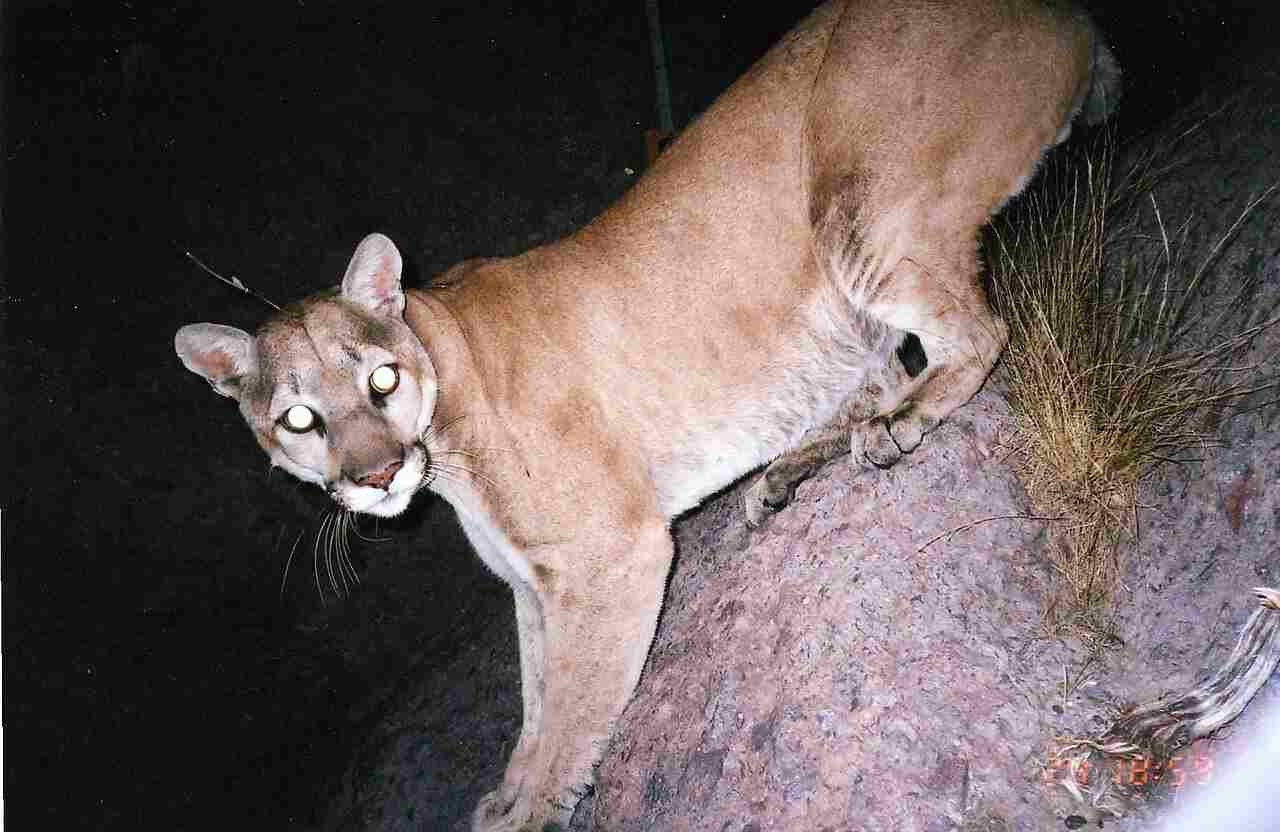
Conclusion
I). SIMILARITIES
In conclusion, the comparison between jaguars and mountain lions reveals several similarities. Both animals belong to the same family, Felidae, and share similar physical characteristics such as muscular bodies, sharp retractable claws, and keen senses.
They are also skilled hunters and have adapted to a carnivorous diet. Additionally, both jaguars and mountain lions face threats to their survival in the wild due to habitat loss and human activities.
II). DIFFERENCES
Despite their similarities, there are notable differences between jaguars and mountain lions. Jaguars are larger and heavier than mountain lions, with a more robust build. They also have a distinctive coat pattern with rosettes, while mountain lions have a plain tan or brown coat.
In terms of behavior, jaguars are known for their ability to swim and their preference for hunting in water, while mountain lions are more terrestrial and agile climbers. Furthermore, jaguars have a stronger bite force compared to mountain lions, which allows them to prey on larger animals.
